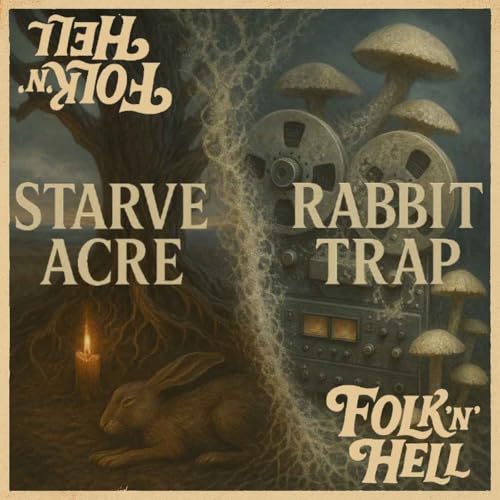
FolknHell
カートのアイテムが多すぎます
カートに追加できませんでした。
ウィッシュリストに追加できませんでした。
ほしい物リストの削除に失敗しました。
ポッドキャストのフォローに失敗しました
ポッドキャストのフォロー解除に失敗しました
-
ナレーター:
このコンテンツについて
FolknHell is the camp-fire you shouldn’t have wandered up to: a loud, spoiler-packed podcast where three unapologetic cine-goblins – host Andy Davidson and his horror-hungry pals David Hall & Dave Houghton, decide two things about every movie they watch: 1, is it folk-horror, and 2, is it worth your precious, blood-pumping time.
Armed with nothing but “three mates, a microphone, and an unholy amount of spoilers” Intro-transcript the trio torch-walk through obscure European oddities, cult favourites and fresh nightmares you’ve never heard of, unpacking the myths, the monsters and the madness along the way.
Their rule-of-three definition keeps every discussion razor-sharp: the threat must menace an isolated community, sprout from the land itself, and echo older, folkloric times.
Each episode opens with a brisk plot rundown and spoiler warning, then erupts into forensic myth-picking, sound-design geekery and good-natured bickering before the lads slap down a score out of 30 (“the adding up is the hard part!")
FolknHell is equal parts academic curiosity and pub-table cackling; you’ll learn about pan-European harvest demons and still snort ale through your nose. Dodging the obvious, and spotlighting films that beg for cult-classic status. Each conversation is an easy listen where no hot-take is safe from ridicule, and folklore jargon translated into plain English; no gate-keeping, just lots of laughs!
Hosted on Acast. See acast.com/privacy for more information.
Andrew Davidson, Dave Houghton, David Hall-
 2025/11/2038 分
2025/11/2038 分カートのアイテムが多すぎます
ご購入は五十タイトルがカートに入っている場合のみです。カートに追加できませんでした。
しばらく経ってから再度お試しください。ウィッシュリストに追加できませんでした。
しばらく経ってから再度お試しください。ほしい物リストの削除に失敗しました。
しばらく経ってから再度お試しください。ポッドキャストのフォローに失敗しました
ポッドキャストのフォロー解除に失敗しました
-
 58 分
58 分カートのアイテムが多すぎます
ご購入は五十タイトルがカートに入っている場合のみです。カートに追加できませんでした。
しばらく経ってから再度お試しください。ウィッシュリストに追加できませんでした。
しばらく経ってから再度お試しください。ほしい物リストの削除に失敗しました。
しばらく経ってから再度お試しください。ポッドキャストのフォローに失敗しました
ポッドキャストのフォロー解除に失敗しました
-
 2025/10/2343 分
2025/10/2343 分カートのアイテムが多すぎます
ご購入は五十タイトルがカートに入っている場合のみです。カートに追加できませんでした。
しばらく経ってから再度お試しください。ウィッシュリストに追加できませんでした。
しばらく経ってから再度お試しください。ほしい物リストの削除に失敗しました。
しばらく経ってから再度お試しください。ポッドキャストのフォローに失敗しました
ポッドキャストのフォロー解除に失敗しました


